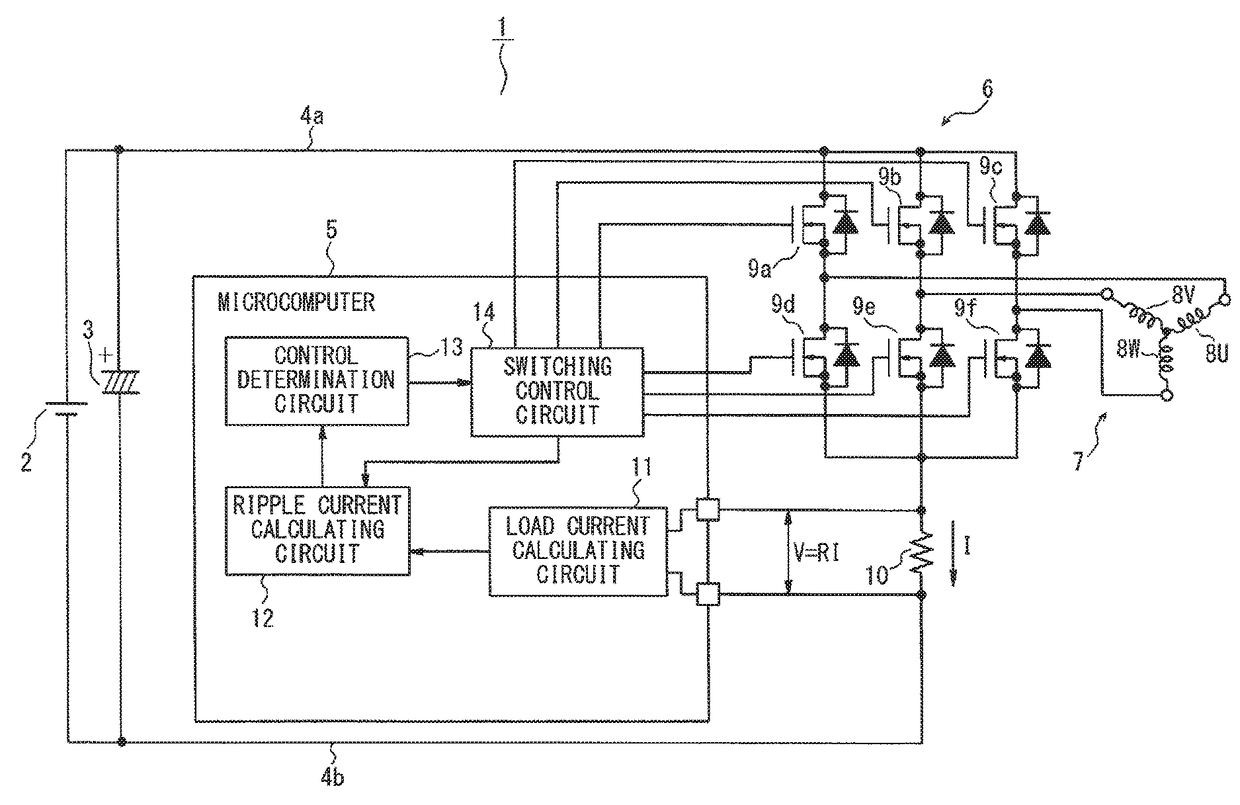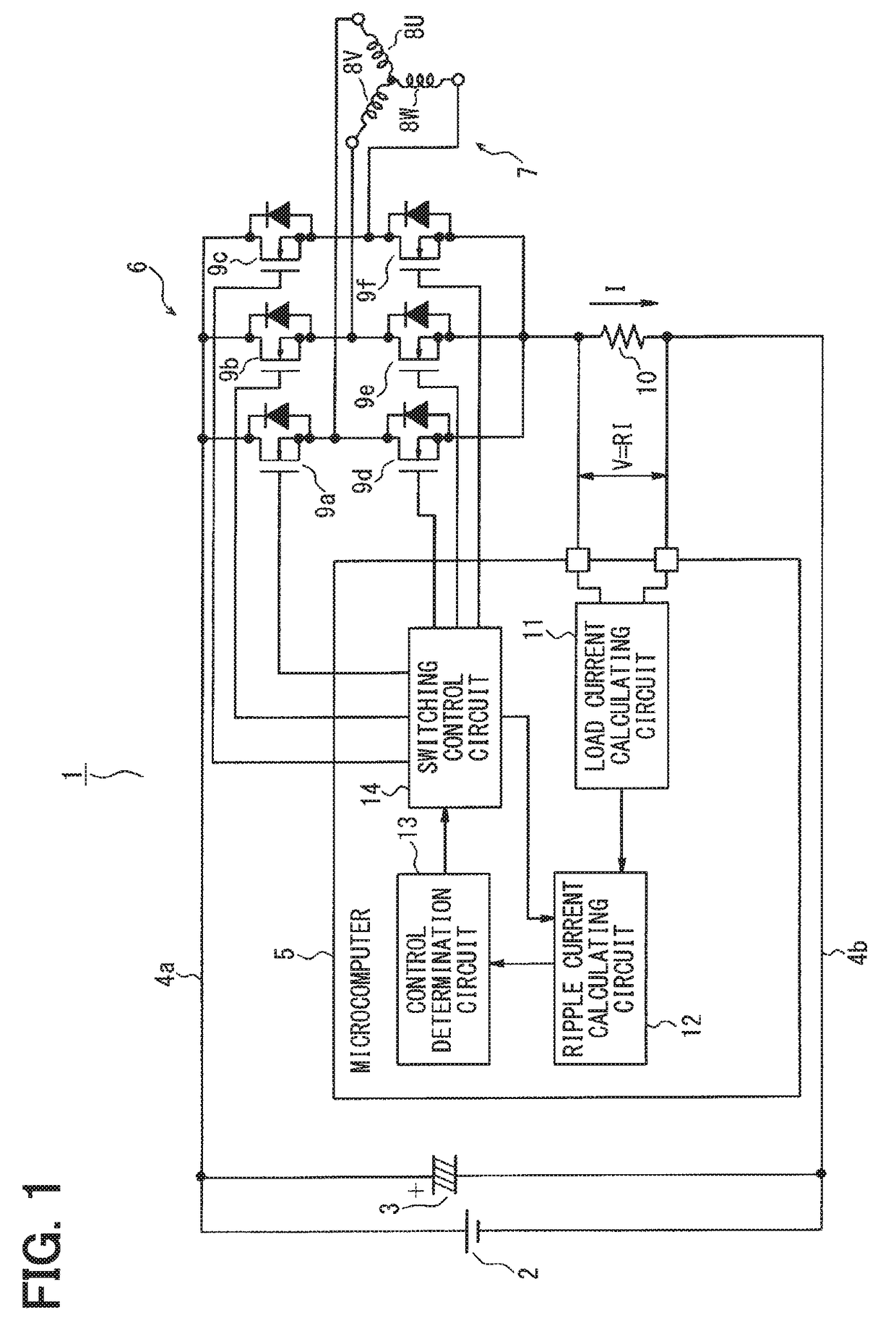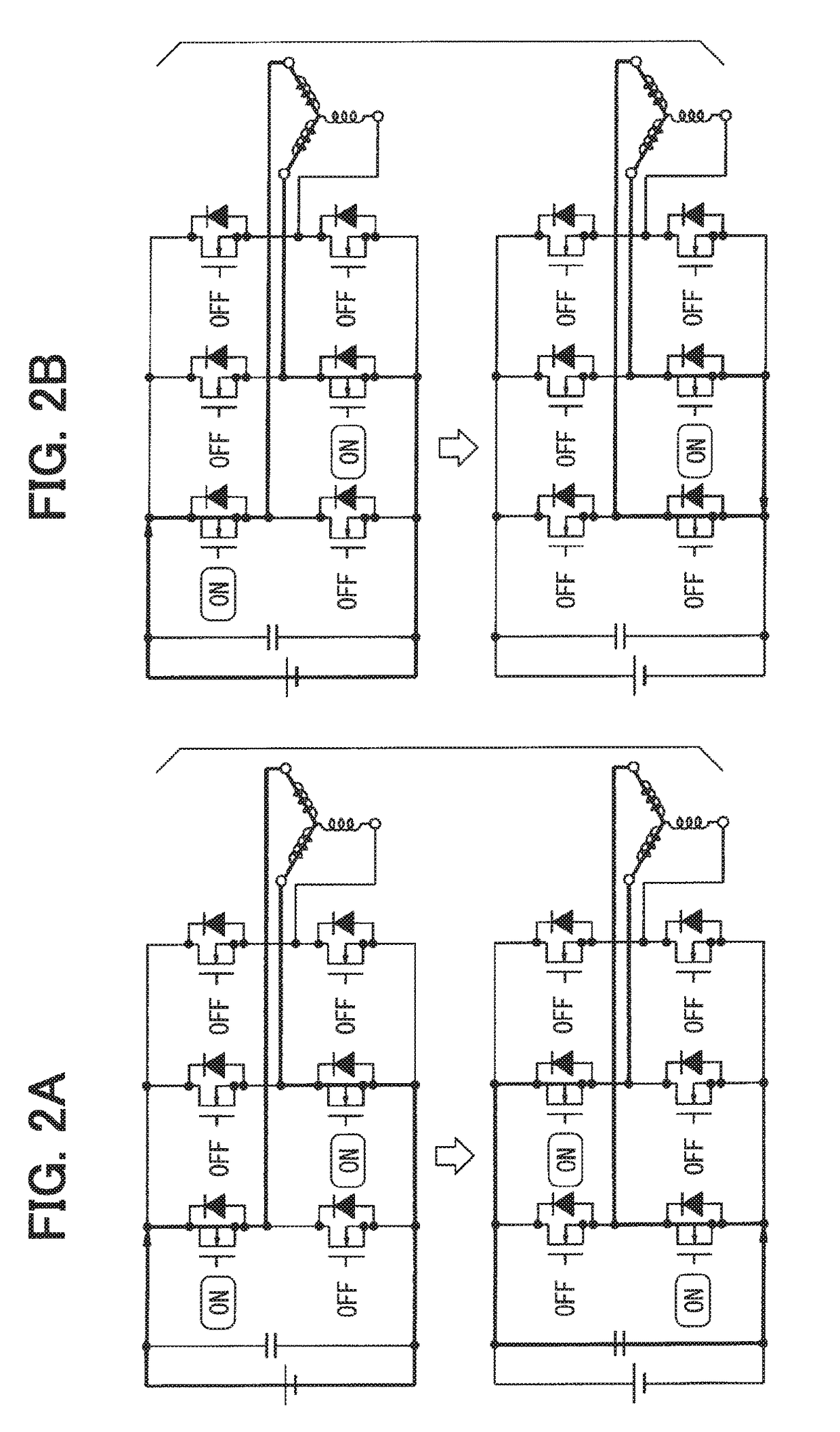Motor control device and motor control method
a technology of motor control and control device, which is applied in the direction of electronic commutator control, electronic commutator motor control, control system, etc., can solve the problems of control device performing unbalanced-drive switching for an entire time period
- Summary
- Abstract
- Description
- Claims
- Application Information
AI Technical Summary
Benefits of technology
Problems solved by technology
Method used
Image
Examples
first embodiment
[0029](First Embodiment)
[0030]As illustrated in FIG. 1, an inverter device 1 is configured to be connected to a parallel circuit of a DC power supply (drive power supply) 2 and a smoothing capacitor (electrolytic capacitor) 3 via power supply lines (drive power supply lines) 4a and 4b. The inverter device 1 is configured to include a microcomputer (control device) 5 and an inverter circuit 6. Stator windings 8U, 8V, and 8W of a brushless DC motor 7 (hereinafter, simply referred to as a motor) are respectively connected to a U phase output terminal, a V phase output terminal, and a W phase output terminal of the inverter circuit 6. The respective one ends of the stator windings 8U, 8V, and 8W are connected together (star connection). For example, the motor 7 is an air-blowing fan motor mounted in a vehicle.
[0031]The inverter circuit 6 is configured such that six N-channel MOSFETs (switching devices) 9a to 9f are connected to each other in a three-phase bridge configuration. A freewhe...
second embodiment
[0047](Second Embodiment)
[0048]Hereinafter, the same reference signs will be assigned to the same portions as in the first embodiment. The same portions will not be described, and different portions will be described. As illustrated in FIG. 8, in an inverter device 21 in a second embodiment, a diode circuit (temperature detection device and ripple current estimating device) 22, in which multiple diodes are connected in series to each other, is disposed in the vicinity of a smoothing capacitor 3 so as to detect the temperature of the smoothing capacitor 3. The diode circuit 22 is connected in series to a current source 23, which is disposed on an anode side of the diode circuit 22, between the power supply and the ground.
[0049]A microcomputer 24 replacing the microcomputer 5 includes a diode temperature calculating circuit (temperature estimating device and ripple current estimating device) 25. The diode temperature calculating circuit 25 reads the terminal voltage of the diode circu...
third embodiment
[0054](Third Embodiment)
[0055]Hereinafter, the points of difference of a third embodiment with reference to the second embodiment will be described. As illustrated in FIG. 10, in an inverter device 31 in the third embodiment, a thermistor (temperature detection device and ripple current estimating device) 32 is disposed in the vicinity of a smoothing capacitor 3 so as to detect the temperature of the smoothing capacitor 3. The thermistor 32 is connected in series to a resistance element 33 between the power supply and the ground.
[0056]A microcomputer 34 replacing the microcomputer 5 includes a thermistor temperature detecting circuit (temperature estimating device and ripple current estimating device) 35 replacing the diode temperature calculating circuit 25. The thermistor temperature calculating circuit 35 reads a terminal voltage Vt of the thermistor 32, and performs A / D conversion on the terminal voltage Vt. The thermistor temperature calculating circuit 35 obtains the internal ...
PUM
 Login to View More
Login to View More Abstract
Description
Claims
Application Information
 Login to View More
Login to View More - R&D
- Intellectual Property
- Life Sciences
- Materials
- Tech Scout
- Unparalleled Data Quality
- Higher Quality Content
- 60% Fewer Hallucinations
Browse by: Latest US Patents, China's latest patents, Technical Efficacy Thesaurus, Application Domain, Technology Topic, Popular Technical Reports.
© 2025 PatSnap. All rights reserved.Legal|Privacy policy|Modern Slavery Act Transparency Statement|Sitemap|About US| Contact US: help@patsnap.com



